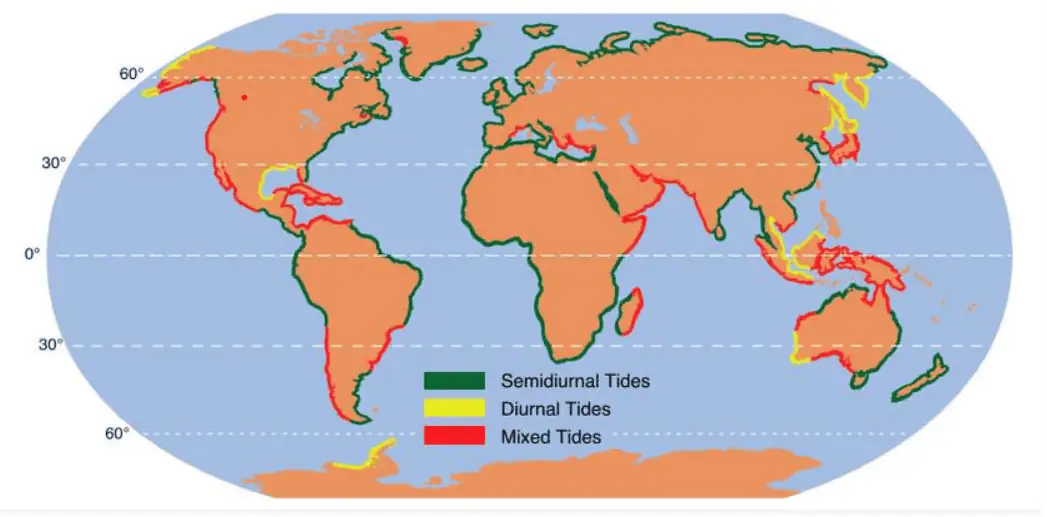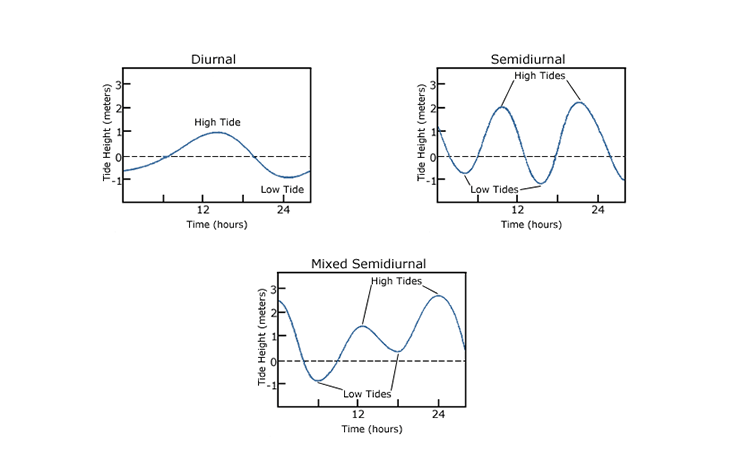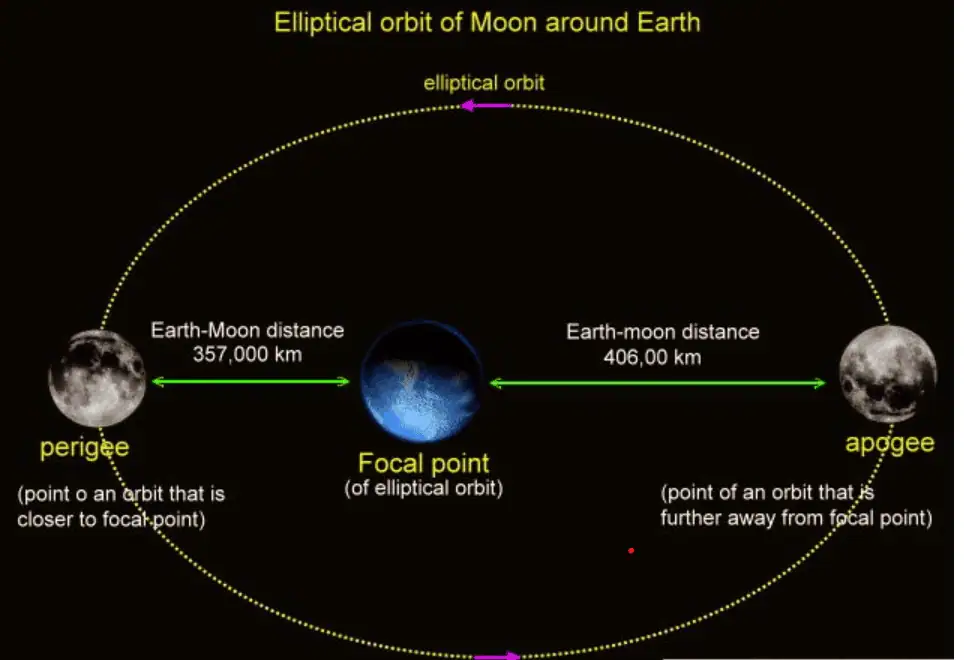Tides, those rhythmic shifts in sea level, are orchestrated by the gravitational pull of both the moon and the sun. Periodically, as these celestial bodies exert their influence, the seas respond with a rise and fall—a mesmerizing phenomenon. However, tides aren’t solely a product of celestial ballet; they also intertwine with earthly elements, specifically the winds and atmospheric pressure. These terrestrial forces, often referred to as meteorological effects, imbue the waters with dynamic surges, setting them in motion.
Tides, in their elegant predictability, stand apart from the more capricious surges. While tides adhere to a well-choreographed routine dictated by the moon and sun, surges are the result of complex interactions between atmospheric pressure and winds, often exhibiting less regularity. Together, these elements compose the ever-shifting tapestry of our oceans, a harmonious blend of cosmic and terrestrial influences.
Definition of Tides
**”The Complex Nature of Tides: A Ballet of Celestial Forces and Coastal Factors”**
Tides, the rhythmic ebb and flow of sea levels, result from the intricate interplay of gravitational forces exerted primarily by the Moon, with a lesser influence from the Sun, along with the dynamic dance of the Earth and Moon in their orbital embrace.
To predict these tidal movements, tide tables are invaluable tools for specific locations, offering insights into anticipated times and amplitudes, also known as the “tidal range.” These predictions, however, are subject to a multitude of variables. Factors such as the alignment of the Sun and Moon, the phase and magnitude of the tide (reflecting deep ocean tide patterns), amphidromic systems within the world’s oceans, and the coastal shape and near-shore bathymetry all contribute to the intricate timing of tides. It’s important to note that these predictions serve as approximations, as the actual occurrence and height of tides can be influenced by wind patterns and atmospheric pressure.
Coastlines exhibit different tidal patterns: some experience semi-diurnal tides, characterized by two nearly equal high and low tides daily, while others witness diurnal tides, with just one high and one low tide each day. A third category, termed “mixed tide,” features two tides of uneven magnitudes within a day, showcasing the fascinating diversity of tidal behavior around the world’s shores.
READ MOREPOLITY: Parliamentary & Presidential Government: Tides ( Important for UPSC)
Understanding the Mechanism Behind Tides
Tides, those mesmerizing shifts in sea levels, owe their existence to a complex interplay of forces and celestial bodies. Here’s a breakdown of the factors contributing to tide formation:
Gravity’s Influence
Tides primarily arise from the gravitational force exerted by the moon on Earth. Although the sun also exerts gravitational pull, its effect is comparatively minor.
Centrifugal Counterbalance
In opposition to gravity, there is the centrifugal force, which endeavors to counteract the moon’s gravitational pull.
Tidal Bulges Emerge
The portion of Earth facing the moon experiences a tidal bulge due to the moon’s gravitational pull. Simultaneously, another tidal bulge forms on the opposite side due to the centrifugal force.
Tide-Generating Force
The key to tidal generation lies in the difference between gravitational force and centrifugal force.
Tidal Bulge Formation
When the Earth’s surface is closest to the moon, the gravitational pull surpasses the centrifugal force, creating a bulge on the moon-facing side.
Opposite Bulge Formation
Conversely, the Earth’s surface on the side opposite the moon experiences less gravitational pull, allowing the centrifugal force to dominate. This results in a bulge on the opposite side.
Horizontal Forces at Play
It’s important to note that horizontal forces on Earth’s surface play a more significant role in generating tides than the vertical pull that causes tidal bulges.
Variations in Bulge Height
The height of tidal bulges varies depending on their location. Wide continental shelves give rise to higher tidal bulges, while mid-oceanic islands produce lower ones.
Impact of Coastal Features
Estuaries and bay configurations along coastlines amplify the intensity of tides. Tides are notably influenced by funnel-shaped bays, and their interaction with bays, estuaries, or islands can create tidal currents.
Influential Factors on Tidal Characteristics
Lunar Movement
The gravitational pull of the moon on the Earth’s oceans is a fundamental factor in determining the nature and magnitude of tides. As the moon orbits our planet, it creates tidal bulges in the oceans, resulting in high tides where these bulges form and low tides where they are absent.
Solar and Lunar Position
The relative positions of both the sun and the moon concerning the Earth are essential. During a new or full moon when the sun, Earth, and moon align, the gravitational forces combine, causing higher high tides, known as spring tides. Conversely, during the first and third quarters of the moon, when the sun and moon are at right angles to each other, the gravitational forces partially cancel each other out, leading to lower high tides, referred to as neap tides.
Water Distribution
The Earth’s oceans are not uniformly distributed across the globe due to varying factors such as geography and temperature. This uneven distribution results in variations in tide heights as water responds differently to gravitational forces.
Ocean Configuration
The shape and depth of ocean basins also play a role in shaping tidal patterns. Narrow and shallow coastal areas may experience amplified tides compared to deeper, wider ocean regions.
Horizontal Tide-Generating Forces
Tidal forces act horizontally on the Earth’s surface, creating two tidal bulges on opposite sides of the planet. These horizontal forces are more significant than the vertical forces in generating the prominent tidal bulges.
Continental Shelves
Coastal areas with wide continental shelves tend to witness more significant tidal bulges. However, when these tidal bulges encounter mid-oceanic islands or deep ocean basins, they tend to diminish in height.
Coastal Features
The shape of bays and estuaries along a coastline can intensify the effects of tides. Funnel-shaped bays, in particular, can concentrate tidal energy, resulting in higher tidal magnitudes within these enclosed areas.
Tidal Currents
When tidal bulges move through constricted passages between islands or into bays and estuaries, they create powerful tidal currents. One well-known example is a tidal bore, a dramatic tidal current that rushes upriver and is often associated with estuaries.
The Bay of Fundy, Canada
The Bay of Fundy in Nova Scotia, Canada, is renowned for hosting the world’s most extreme tides. Here, the tidal bulges can reach staggering heights of 15 to 16 meters. Remarkably, this region experiences two high tides and two low tides in slightly over a 24-hour period, resulting in the rapid alternation of tides every approximately six hours. The unique geography of the Bay of Fundy, with its funnel-shaped bay and significant tidal currents, contributes to the extraordinary tidal variations observed in this area.
Characteristics of Tides
- Tidal bulges are more pronounced on broad continental shelves, resulting in greater tidal heights in these areas.
- In the open ocean, tidal currents tend to be relatively weak, with less noticeable tidal effects.
- When tidal bulges encounter mid-oceanic islands, their height decreases, leading to lower tidal levels in these regions.
- The configuration of bays and estuaries along coastlines can significantly amplify tidal intensities.
- Funnel-shaped bays have a profound impact on tidal magnitudes, exemplified by the Bay of Fundy, which boasts the world’s highest tidal range.
- The presence of large continents on Earth acts as an obstruction, impeding the westward movement of tidal bulges as the planet rotates.
- Tidal patterns exhibit considerable variation across different oceans and geographic locations, leading to unique tidal characteristics in various parts of the world.
Types of Tides


Fig: showing the types of tides
- Semi-Diurnal Tides
- Diurnal Tides
- Mixed Tides
Semi-Diurnal Tides
A semi-diurnal tidal pattern consists of two approximately equal high tides and two low tides occurring each day, with an approximate time interval of 12 hours and 25 minutes between high and low tides. This tidal cycle is predominantly observed in the Indian Ocean. It is also prevalent along the following coastal regions:
1. Eastern African Coast
2. Bay of Bengal
In these areas, residents and marine ecosystems commonly experience the rhythmic rise and fall of tides twice daily, creating a semi-diurnal tidal regime.
Diurnal Tides
It means four tides in a day. Two tides by the sun and two by the moon. Spring Tide It is an exceptionally high tide generated by the complementary factor played by the Sun with respect to the moon. It should be noted that when Sun, Moon, and Earth are in the same line, the position is known as the Syzygy. This syzygy can be of 2 types :
- Conjunction: when the moon and sun are on the same side
- Opposition: When the moon and sun are on the opposite side In both of these conditions, the magnitude of the tide will be equally high.
Mixed Tides
The mixed tidal cycle, often referred to as mixed tide, is characterized by the occurrence of two unequal high tides and low tides within a single tidal cycle. This unique tidal pattern combines elements of both semi-diurnal and diurnal oscillations. Notably, mixed tides are commonly observed in specific regions, including:
1. Gulf of Mexico
2. Caribbean Sea
3. Southeastern Brazilian coast
In these areas, residents and ecosystems experience the distinctive phenomenon of mixed tides, where the tide rises and falls with a blend of semi-diurnal and diurnal characteristics.
Tides Driven by Sun, Moon, and Earth Positions
The elevation of the water’s surface, commonly referred to as high tide, experiences significant variations depending on the relative positions of the sun, moon, and Earth. This phenomenon gives rise to two distinct tidal patterns known as spring tides and neap tides.
Spring Tides
The height of the tide is notably influenced by the alignment of the sun, moon, and Earth. When these celestial bodies are in a straight line, with the Earth positioned between the sun and the moon, high tides reach their maximum height. These high tides are known as spring tides and occur twice each month, specifically during the full moon phase and the new moon phase. During these periods, the gravitational forces of both the sun and the moon combine, leading to the heightened tidal effect.
Neap Tides
Neap tides, on the other hand, typically occur around seven days after spring tides. During neap tides, the sun and the moon are positioned at right angles to each other relative to the Earth. This results in the gravitational forces of the sun and moon partially counteracting each other. Despite the moon’s gravitational pull being more than twice as strong as that of the sun, the sun’s gravitational force diminishes the moon’s attraction during neap tides. Similar to spring tides, neap tides also take place twice a month.
The dynamic interplay of the sun, moon, and Earth’s positions governs the amplitude of tides, with spring tides featuring high tide elevations and neap tides representing a period of comparatively lower tide elevations.
Influence of Moon’s Perigee and Apogee on Tidal Magnitude:
The moon’s position in its orbit has a significant impact on tidal behavior. Approximately once a month, during the moon’s perigee when it is closest to the Earth, we experience particularly high and low tides. These tidal variations result in a tidal range that surpasses the usual heights we observe during other times. Conversely, about two weeks later, when the moon reaches its apogee, its gravitational influence on Earth is reduced, leading to tidal ranges that are lower than the average.
Influence of Earth’s Perihelion and Aphelion on Tidal Magnitude:

Similarly, the Earth’s position in its orbit relative to the sun plays a role in determining tidal patterns. When the Earth is at its perihelion, which occurs around January 3rd each year and signifies its closest approach to the sun, tidal ranges become notably greater. This alignment results in exceptionally high and low tides. Conversely, during the Earth’s aphelion, which occurs around July 4th each year when it is farthest from the sun, tidal ranges are considerably less than average.
Understanding Ebb and Flood Tides:
The cycle of tides includes two phases, namely ebb and flood (also known as flow). Ebb tide refers to the period between high tide and low tide when the water level is receding. On the other hand, flood tide occurs between low tide and high tide when the tide is rising.
Significance of Tides:
Tides hold considerable importance for various aspects of human activities and the environment:
Navigation
Tidal heights are crucial for safe navigation, particularly in harbors located near rivers and estuaries with shallow bars at their entrances, which can hinder ships and boats from entering. High tides raise water levels near the shores, facilitating easier access to harbors. Tides also enable the navigation of rivers by ocean-going vessels, contributing to the importance of ports like London and Calcutta.
Fishing
High tides attract more fish closer to the shore, creating favorable conditions for fishing. This increased proximity of fish during high tides leads to abundant catches for fishermen.
Desilting
Tides play a role in desilting river estuaries, helping to remove sediment buildup and polluted water from these areas, thereby improving water quality.
Energy Generation
Tides are harnessed as a source of electrical power in countries such as Canada, France, Russia, and China. Tidal power projects, like the 3 MW project at Durgaduani in the Sunderbans of West Bengal, contribute to sustainable energy production.
The predictability of tides based on the positions of the Earth, moon, and sun allows for advanced planning by navigators, fishermen, and others who depend on tidal conditions for their activities, making tides a crucial natural phenomenon with multifaceted benefits.
Tidal Bore
Tidal phenomena extend beyond the open ocean and are also observed in gulfs and estuaries, giving rise to a unique phenomenon known as a tidal bore. Tidal bores are characterized by several noteworthy features:
- Tidal bores often manifest in gulfs with wide openings at their fronts and narrower sections towards their rear. These conditions contribute to the occurrence of higher tides in such areas.
- The movement of water into and out of a gulf through specific channels is referred to as tidal currents.
- When a tide enters a shallow and narrow river estuary, the water from the river piles up against the oncoming tidal wave. This, coupled with friction against the riverbed, results in the formation of a steep-nosed tidal crest that appears almost vertical. This wall of rushing water is known as a tidal bore.
- Several factors influence the formation of tidal bores, including the strength of the incoming tidal wave, the slimness and depth of the channel, and the flow of the river.
- Although the Amazon River is the world’s largest river and its mouth is not narrow, it still experiences a strong tidal bore. This occurs because the river mouth is shallow and dotted with numerous low-lying islands and sandbars.
- Tidal bores are observed in various parts of the world, with notable examples in the Hooghly River in India and the most powerful tidal bore occurring in China’s Qiantang River.
- The term ‘bore’ is derived from the sound generated by the tidal current as it rushes through narrow channels.
- Tidal bores are relatively rare and typically occur in regions with a substantial tidal range, often exceeding 6 meters (20 feet) between high and low water levels. They predominantly occur during the flood tide and rarely during the ebb tide. Tidal bores are also infrequent during neap tides, which coincide with quarter moons when tidal forces are weaker.
Impact of Tidal Bore:
- Tidal bores are less predictable compared to regular tides, making them potentially hazardous for navigation and activities along estuarine zones.
- The powerful force of tidal bores can disrupt shipping and navigation in estuaries, posing a risk to boats and ships, particularly those of considerable size.
- Tidal bores can disturb fishing zones within estuaries and gulfs, impacting local fishing activities.
- Tidal bores can have adverse ecological effects on river mouths. Estuaries affected by tidal bores often serve as rich feeding grounds and breeding habitats for various wildlife species.
- Animals caught in the leading edge of a tidal wave may be submerged in silty water, attracting carnivores and scavengers to the aftermath of tidal bores.
1. What Are Tides?
Tides are the periodic rise and fall of the Earth’s oceans and other large bodies of water. They are primarily caused by the gravitational pull of the moon and the sun on Earth.
2. How Often Do Tides Occur?
Tides occur twice a day, roughly every 12 hours and 25 minutes, due to the Earth’s rotation.
3. What Causes High and Low Tides?
The gravitational pull of the moon creates a high tide on the side of the Earth facing the moon and a high tide on the opposite side (away from the moon). These are the high tides. The areas in between experience low tides.
4. What Is a Spring Tide?
A spring tide occurs when the sun, moon, and Earth are aligned, resulting in higher high tides and lower low tides. Spring tides happen during the full moon and new moon phases.
5. What Is a Neap Tide?
A neap tide occurs when the sun and moon are at right angles to each other relative to Earth. Neap tides lead to lower high tides and higher low tides. They happen during the first and third quarter moon phases.